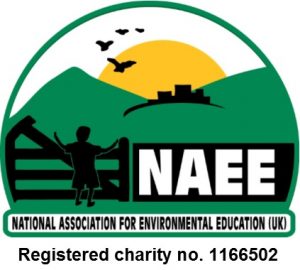 The Framing Nature toolkit is a practical guide to the use of words to create appropriate messages about the natural world. It supports the Common Cause for Nature report that offers help to conservation organisations on how to ensure their work strengthens the values that motivate people to protect and enjoy nature.
The Framing Nature toolkit is a practical guide to the use of words to create appropriate messages about the natural world. It supports the Common Cause for Nature report that offers help to conservation organisations on how to ensure their work strengthens the values that motivate people to protect and enjoy nature.
MEEN is hosting the Save Our Soils Intergenerational Conference on Friday 6th July, 10 – 2.30pm at Bridge 5 Mill, Ancoats, M4 7HR. The conference will be followed by MEEN’s 2018 AGM.
The conference will bring together pupils, Eco coordinators, teachers, growers and gardeners, NGOs, politicians, businesses, academics, students, in fact anyone interested in learning or sharing knowledge, experience or expertise around soils. It will cover issues such as soil habitat, soil as a provider of food and resources and as a climate regulator, and will examine soil contamination and impoverishment and, most importantly, offer ideas about how we can improve and remediate the soil in our schools and gardens, our city and countryside.
There will be two key note speakers; a range of workshops delivered by young and old; two sessions from the floor, like ‘Teach Meets’, offering an opportunity for the schools involved in the Save Our Soils project to present their findings and for everyone else to share their knowledge, skills and ideas in relation to soils and educating others about soils. If you would like more information or to book a place please reply to this email at coordinator@meen.org.uk. Places are limited so book early.
In pocket mountains, the FSC shows how 3D printed landscapes can enhance geographical understanding of physical landscapes and can support landscape exploration and interpretation. The 3D printed landscapes provide a tactile, hands-on, scale model of landscapes being studied providing an access point to understanding and interpreting OS maps, a birds-eye view without leaving the ground, a physical model that you can touch and feel, and a tool to support the asking and answering of questions about land-forms and landscapes.
Ashen has announced its 2018 award winners. Founder Director, Sarah Butler-Sloss, said:
“The solutions, ideas and innovations that our winners have developed are already making a crucial difference in terms of creating access to energy, lowering carbon emissions, developing clean, sustainable solutions for cities and providing vital health and economic benefits. It is absolutely necessary for us to work together to achieve the objectives of the Paris Agreement and the UN’s 2030 Sustainable Development Goals and every one of our 2018 winners is playing a key role in moving climate change action forward.”
The LEEF Reading group has a session on Climate Change Education on 20th June, 6pm-7.15pm, Outside the Poetry Library, Level 5, Royal Festival Hall. Discussion will be based on this article from Urban Environmental Education Review. This is a free event, open to all including newcomers. If you missed the last reading group on ‘Environmental Art’, you can access a little write-up here. The first London National Park City Fair will be launched on Saturday 21st July, at Conway Hall, Red Lion Square in the centre of London. You can find out how you can get involved here.
Here’s a link to the research digest of the Children and Nature Network which includes the following features:
The biomass of all the livestock in the world is 150 times the biomass of all the wild mammals left (0.11 & 0.007 gigatonnes respectively), according to research published in Proceedings of the National Academy of Sciences which is a sharp measure of the effects of humanity on the world. Another is that the biomass of wild mammals has reduced to 1/6 th of its value some 50,000 years ago. To explore these, and related data, click here for a summary of the paper and a nice chart.
Where now for the environment movement? asks Tom Crompton in a new essay from the Common Cause Foundation. You can read it here. nIt sets out five key opportunities for creating a step-change in the environmental movement: ways in which our environmental community could work more effectively to inspire the broad-based and durable movements that will create pressure for proportionate action on environmental problems.
“The world is using more and more fossil fuels. Yet the essential aim is for the world to be greenhouse gas (GHG) neutral by 2100, that is to emit no more GHGs than are absorbed. The main GHG is, of course, CO2 . Until the industrial revolution, the amounts of CO2 emitted by natural processes and human activities roughly equalled the amounts absorbed by rocks, the oceans and trees, so that the amount in the atmosphere stayed at around 280 parts per million (ppm). Since then the use of fossil fuels has thrown this out of balance so that there is currently about 400 ppm and rising.”

A really useful, good round up with links of EE events